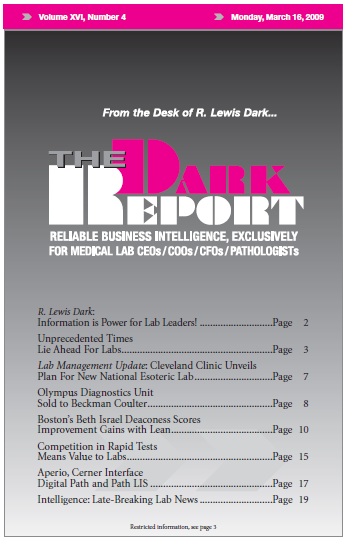CEO SUMMARY: Here’s a lab industry first: insight and analysis about why hospital/health system laboratories are already feeling the financial pinch as their parent organizations scramble to conserve and accumulate cash. That’s bad news for IVD vendors and other lab industry suppliers. And that’s not all! Healthcare reform proposals carry the potential to further hamstring …
Unprecedented Times Lie Ahead For Labs Read More »
To access this post, you must purchase The Dark Report.


